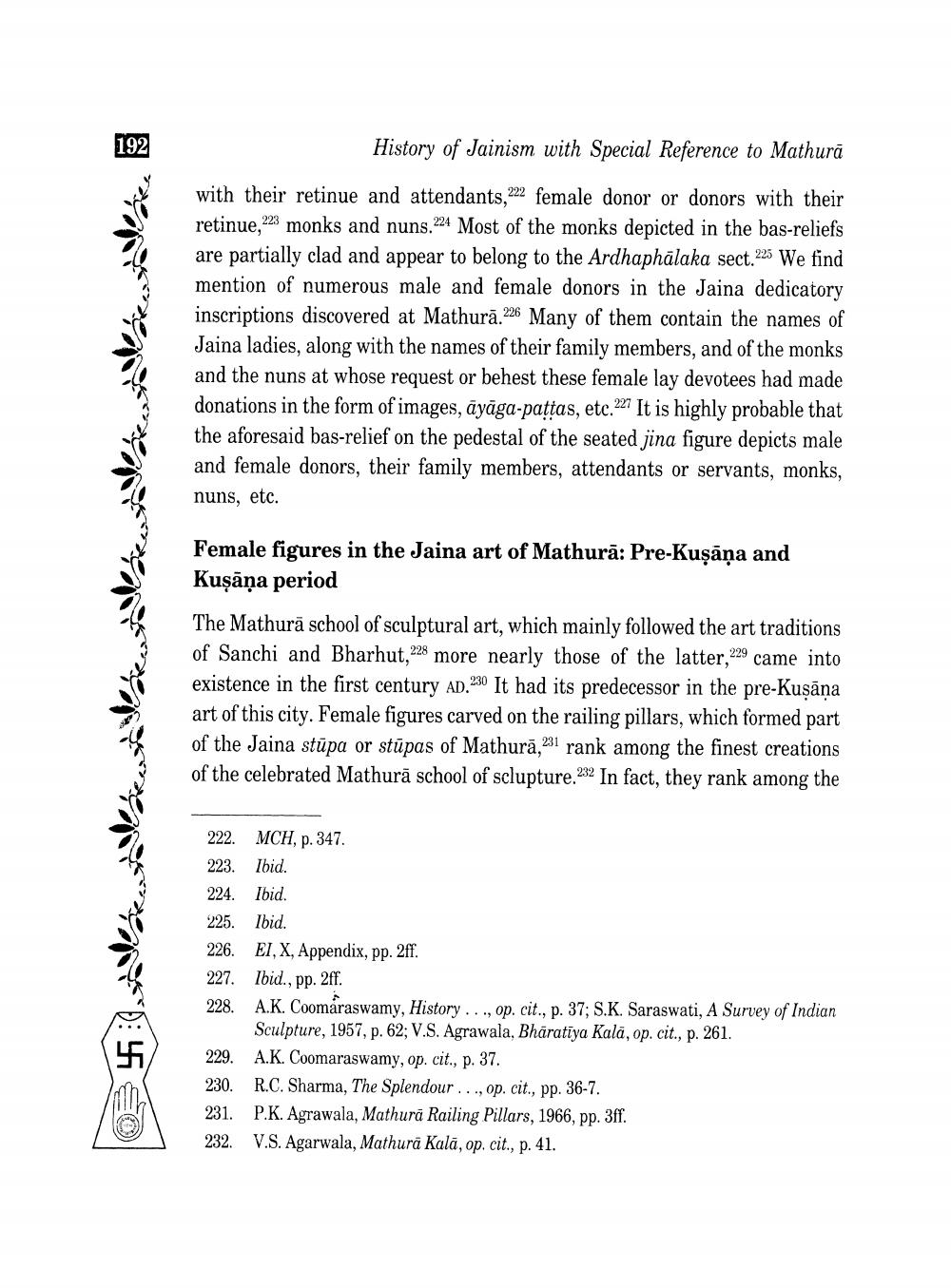________________
192
History of Jainism with Special Reference to Mathurā
with their retinue and attendants,222 female donor or donors with their retinue,223 monks and nuns.224 Most of the monks depicted in the bas-reliefs are partially clad and appear to belong to the Ardhaphālaka sect.225 We find mention of numerous male and female donors in the Jaina dedicatory inscriptions discovered at Mathurā.226 Many of them contain the names of Jaina ladies, along with the names of their family members, and of the monks and the nuns at whose request or behest these female lay devotees had made donations in the form of images, āyāga-pattas, etc.227 It is highly probable that the aforesaid bas-relief on the pedestal of the seated jina figure depicts male and female donors, their family members, attendants or servants, monks, nuns, etc.
Female figures in the Jaina art of Mathurā: Pre-Kuşāna and Kuşāņa period
The Mathurā school of sculptural art, which mainly followed the art traditions of Sanchi and Bharhut,228 more nearly those of the latter,229 came into existence in the first century AD.230 It had its predecessor in the pre-Kuşāņa art of this city. Female figures carved on the railing pillars, which formed part of the Jaina stūpa or stūpas of Mathurā,231 rank among the finest creations of the celebrated Mathurā school of sclupture.232 In fact, they rank among the
222. MCH, p. 347. 223. Ibid. 224. Ibid. 225. Ibid. 226. EI, X, Appendix, pp. 2ff. 227. Ibid., pp. 2ff. 228. A.K. Coomaraswamy, History ..., op. cit., p. 37; S.K. Saraswati, A Survey of Indian
Sculpture, 1957, p. 62; V.S. Agrawala, Bharatiya Kalä, op. cit., p. 261. 229. A.K. Coomaraswamy, op. cit., p. 37. 230. R.C. Sharma, The Splendour ..., op. cit., pp. 36-7. 231. P.K. Agrawala, Mathurā Railing Pillars, 1966, pp. 3ff. 232. V.S. Agarwala, Mathura Kalā, op. cit., p. 41.




